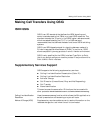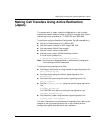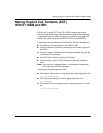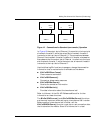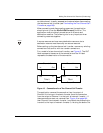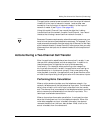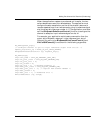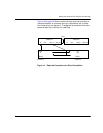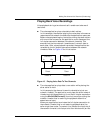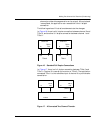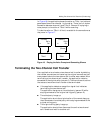
Making Two-Channel Call Transfers (Tromboning)
November 2009 192
Figure 12. Connections for Standard (non-transfer) Operation
In Figure 12 the output slot of Channel_0 transmits to the input slot
of network timeslot 0, while the output slot of network timeslot 0
transmits to the input slot of Channel_0. The connections between
Channel 0 and network timeslot 0 create a full duplex voice session.
Also observe that the output slot of Channel 1 transmits to the input
slot of network timeslot 1, while the output slot of network timeslot 1
transmits to the input slot of Channel 1.
Use the following Bfv functions to access or change the connection
information that is maintained on the Brooktrout hardware:
BfvCallSWClearConns()
Clears resource connection
BfvCallSWConnect()
Connects or disconnects resources
BfvCallSWGetConns()
Queries for connection information
BfvCallSWGetInfo()
Provides information about the two-channel call
Refer to Volume 1 of the Bfv API Reference Manual for further
information on these functions.
The BfvCallSWConnect() and BfvCallSWGetConns() functions
are the most important when setting up a two-channel call transfer.
Before creating a two-channel call transfer, call the
BfvCallSWGetConns() function to get the current connection data
that is stored on the module. Store this information in a local
Channel 0
In
Ref In
Out
Channel 1
In
Ref In
Out
TSlot 1
Out In
TSlot 0
Out In



